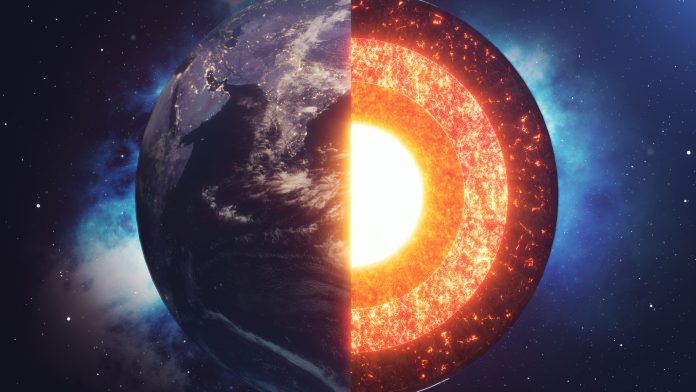Researchers at Lawrence Livermore National Laboratory have analysed the interior of exoplanets, determining the key role of iron.
With the discovery of over 4,500 exoplanets, the necessity to develop a modelling technique to determine the interior structure and dynamics has arisen. Interestingly, the preliminary results indicate that iron plays a vital role.
Assessing the interior of exoplanets
Scientists at Lawrence Livermore National Laboratory (LLNL) have utilised the lasers at the National Ignition Facility to experimentally determine the high-pressure melting curve and structural properties of pure iron up to 1,000 GPa, three times the pressure of Earth’s inner core and nearly four times greater pressure than any previous experiments.
The researchers undertook a sequence of experiments that parallel the conditions detected by a parcel of iron sloping toward the centre of a super-Earth core. The experiments were conducted as part of the NIF Discovery Science programme, which is open access and accessible to all researchers.
“The sheer wealth of iron within rocky planet interiors makes it necessary to understand the properties and response of iron at the extreme conditions deep within the cores of more massive Earth-like planets,” explained Rick Kraus, LLNL physicist and lead author of the paper. “The iron melting curve is critical to understanding the internal structure, thermal evolution, as well as the potential for dynamo-generated magnetospheres.”
Magnetospheres
A magnetosphere is understood to be an essential element of inhabitable terrestrial planets, much like on Earth. Earth’s magneto dynamo is produced in the convecting liquid iron outer core encompassing the solid iron inner core and is fuelled by the latent heat emitted throughout the solidification of the iron.
With the ubiquity of iron in terrestrial planets, exact and specific physical properties at excessive pressure and temperatures are essential to determine what is occurring within their interiors.
A first-order property of iron is the melting point, which is still pondered for the conditions of Earth’s interior. The melt curve is the greatest rheological shift a material can endure, from a material with strength to one without. It is where a solid transitions into to a liquid, and the temperature varies, depending on the pressure of the iron.
The experiments’ conclusions
As a result of the experiments, the researchers were able to ascertain the length of dynamo action throughout core solidification to the hexagonal close-packed structure within super-Earth exoplanets.
“We find that terrestrial exoplanets with four to six times Earth’s mass will have the longest dynamos, which provide important shielding against cosmic radiation.
“Beyond our interest in understanding the habitability of exoplanets, the technique we’ve developed for iron will be applied to more programmatically relevant materials in the future,” added Kraus.
As well as this, the group discovered that the kinetics of solidification at such severe conditions are fast, taking only nanoseconds to shift from a liquid into a solid, enabling the researchers to examine the equilibrium phase boundary. “This experimental insight is improving our modelling of the time-dependent material response for all materials,” Kraus concluded.









